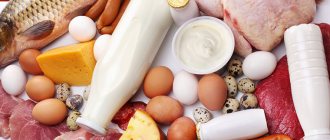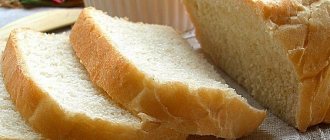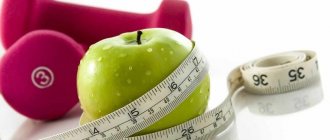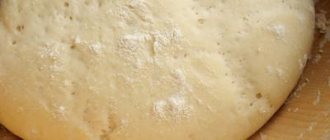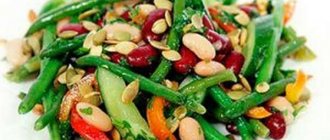The bottom line. No carbohydrate diet
The idea is to limit the consumption of vegetables, fruits, sweets, and cereals. In return, eat more meat, fish, and dairy products.
Low-carbohydrate diet menu for up to 2 weeks
This diet is often used by people leading an active lifestyle. The diet does not put a lot of stress on the body. Due to the amount of proteins in the body, a person is full, has enough nutrients, and the feeling of hunger does not occur for a long time. But any refusal of some food makes itself felt. This one is no exception.
REMEMBER! The body cannot be overloaded, “raped”, tortured!
Everything should be in moderation.
Just something complicated
There are two types of carbohydrates - slow (complex) and fast (simple). The second ones are the most dangerous. Once in the body, they begin to rapidly break down and cause a sharp jump in blood sugar.
Frequent consumption can lead to diseases of the pancreas, endocrine system and diabetes. At the same time, such carbohydrates quickly satisfy hunger. True, they don’t last long and give a person a feeling of pleasure. It becomes addictive.

- White bread,
- bakery,
- sweets,
- rice,
- potato,
- corn,
- honey,
- sweet drinks,
- as well as many fruits (especially grapes and bananas)
- this food contains the most fast carbohydrates.
Slow or, as they are also called, “complex” carbohydrates are broken down gradually. Sugar takes a long time to be absorbed into the blood. This suppresses the feeling of hunger and produces energy.
However, these carbohydrates place a lot of stress on the digestive system. It takes a long time to digest. Therefore, it is recommended to consume them only in the first half of the day.
Slow carbohydrates are found in all cereals, durum wheat pasta and vegetables.
It is believed that, regardless of the type, excess carbohydrate consumption combined with a sedentary lifestyle is a direct path to obesity.
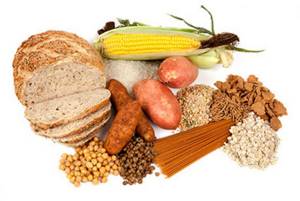
Positive and negative points
According to nutritionists, eliminating carbohydrates from the diet has its pros and cons:
pros
- The effect is almost 100% (this is evidenced by examples of photos, reviews of people losing weight, which are full of blogs, websites, forums).
- The body does not feel significant changes, severe hunger, or loss of energy.
- Fast fat burning.
- There are almost no restrictions on calorie intake.
- When eating protein foods, the body tolerates physical activity more easily.
- High protein intake does not adversely affect kidney function.
- This menu enhances the production of ketones.
Minuses
- Eating protein alone is quite difficult. Sometimes it’s even harder than going completely hungry.
- Protein-rich foods may contain a lot of fat, so they also need to be controlled.
- The body may begin to use protein as an energy source, which will most likely lead to metabolic stress on the liver.
- Reducing carbohydrates leads to ketosis, which, in turn, negatively affects some organs.
- The amount of vitamins, minerals, and fiber may decrease.
INTERESTING! Fiber is found in many foods. You can find it at the pharmacy. For example, from flax seeds.
How does a no-carb diet work?
The carbohydrate-free nutrition program was developed specifically for bodybuilders who were preparing to participate in championships and championships. This diet went well with serious strength training and led to intense weight loss without noticeable harm to the general condition of the body. Like many other diets that were created for professional athletes, the carbohydrate-free nutrition system has become widespread.
The main principle of the diet is a maximum of protein foods and vegetable fats in small quantities. Carbohydrates are limited, but not completely excluded, as they are necessary for the normal functioning of the gastrointestinal tract. The approximate carbohydrate intake is about 40 grams per day.
How it works
Carbohydrates are the main source of energy in the human body. Their excess turns into fat reserves, which leads to excess weight. If the amount of carbohydrates is limited, then the body’s reserve reserves begin to be used, that is, the fat layer is gradually burned.
Four main benefits of a low-carb diet
- Calorie consumption is reduced, since the largest amount of nutrients is contained in carbohydrate foods.
- Appetite decreases, portions become smaller without additional control. You don’t have to once again strain your willpower; weight loss occurs without additional stress. This is due to the fact that it is fast carbohydrates that provoke the feeling of hunger. The less we eat, the easier it becomes to achieve satiety through protein foods.
- Muscle atrophy, which is a common accompaniment of other strict diets, does not develop. Atrophy occurs due to the fact that the body, which does not receive sufficient nutrition, begins to reduce muscle volume. Therefore, the lack of carbohydrates is compensated by protein.
- Large list of permitted products. Only carbohydrates and complex fats are excluded from the diet; everything else can be eaten. In addition, as part of the diet, you are allowed to occasionally treat yourself to small portions of sweets. Thus, weight loss occurs in the most comfortable mode.
Contraindications
Reduced consumption of vegetables, fruits, and cereals leads to diseases of the liver, kidneys, cardiovascular function, and reduces brain activity. People with the above diseases are not recommended to follow this diet. Lack of carbohydrates in the body also leads to constipation.
how to remove belly fat
Eating only protein foods can be more difficult than completely starving. Therefore, it is difficult to emotionally get used to the absence of carbohydrate foods in the diet.
List of people for whom the diet is not suitable:
- with kidney diseases;
- with liver diseases;
- with digestive problems;
- pregnant women (an effective option after childbirth);
- with cardiovascular diseases, etc.
Only with the permission of a doctor can you lose weight in this way. Professionals advise not to go on a diet for more than 2 weeks, as the body will wear out and get tired, especially if you lead an active lifestyle.
The benefits and harms of a no-carbohydrate nutrition program

Low-carbohydrate programs today continue to be heatedly discussed by nutritionists and doctors, but professional athletes use them with success. Speaking about the dangers of a low-carbohydrate diet, it is also necessary to talk about the benefits of this nutrition program:
- Allows you to achieve excellent results - within one or two weeks you will notice good results.
- With the right approach, the diet can be short-term or long-term.
- There is no need to calculate the energy value of the diet.
- There is no restriction on food serving sizes.
- There is no feeling of hunger - this is due to the duration of the processing of protein compounds and fats.
- Muscle mass is preserved - it is this advantage that has made this nutrition program extremely popular among athletes.
- If you exit the diet correctly, the lost kilos are guaranteed not to return.
Let's remember once again why a low-carbohydrate diet is harmful and consider its main disadvantages:
- The body can be poisoned by ketone bodies, which are produced as a result of the breakdown of fats and protein compounds.
- Large amounts of fat in the diet can lead to increased cholesterol levels.
- Vitamin deficiency is possible, which negatively affects the functioning of all systems of the human body.
- Possible disturbances in the functioning of the digestive system.
- During the restructuring of the body, a feeling of lethargy appears, and the person quickly gets tired.
- Nervousness increases and behavior becomes more aggressive.
Kinds
Depending on how much weight you want to lose, your diet will be selected. Normal carbohydrate intake per day is 60-62%, about 400 grams. Considering that carbohydrates are difficult to control, below is a calculation of carbohydrate intake per day (in grams):
- Low carb. With this diet, you are allowed to consume no more than 120 g of carbohydrates/day. Taking vitamins and nutritional supplements, you can go on a diet for about a month. Be sure to follow the correct drinking regime - 2-2.5 liters of water/day.
- No carbohydrates with strict restrictions. No more than 20 g of carbohydrates/day is allowed. Only under medical supervision.
- Kremlin diet. The bottom line: to lose weight - no more than 40 g of carbohydrates / day, to maintain weight - no more than 60 g.
Types of diets during pregnancy
During the period of gestation, the doctor may prescribe a special diet depending on the health status of the expectant mother. In addition, even if everything is in order, the nutrition must be correct, because the fetus receives all the substances necessary for development and growth from the mother’s body.
Protein diet for pregnant women

Proteins are the main building material that is vital for the fetus. Therefore, the expectant mother should eat meat, milk, eggs and other animal products - even during Lent, an exception is made for pregnant women. If you are a vegetarian, then it is better to give up your principles while carrying your child.
A pregnant woman should consume at least 100 grams of protein per day - this applies to the first half of pregnancy. As for the second, the figure here is slightly higher, namely 120 grams per day. At least half of this should be animal proteins.
Every day, the expectant mother should eat at least 100, or even 150 grams of lean meat or fish. You should definitely add milk or fermented milk products, cheese and cottage cheese to this list. A pregnant woman should definitely eat at least one egg a day.
Protein diet menu for pregnant women
To create a sample menu, divide the entire amount of food into five meals.
- For breakfast, eat mainly carbohydrates - for example, eat porridge, drink a glass of kefir, or have breakfast with an egg or fruit.
- During your snack, drink a glass of yogurt, eat a salad of vegetables or fruits.
- At lunch it is necessary to supply the body with carbohydrates and protein. Eat fish or meat with porridge. You can also have lunch with fish or meat soup.
- For dinner, the menu should consist mainly of light proteins. This means, have cottage cheese for dinner, eat an egg, or treat yourself to boiled meat or fish.
- And again a snack - fruits and vegetables would be appropriate here. You can also drink a glass of yogurt.
It is best to coordinate the protein diet menu with your doctor. A pure protein diet during pregnancy is prohibited. Due to excess protein and lack of carbohydrates, there is a large load on the kidneys and liver. The result can be very negative consequences. Protein poisoning is possible, as well as decreased kidney and liver function, gastrointestinal and genitourinary diseases. The doctor will select an ideal diet that is safe for the child and mother and healthy. Excess protein negatively affects blood vessels and the heart. Therefore, a non-strict protein diet is acceptable. A pregnant woman's menu should be complete and balanced, with a slight emphasis on protein nutrition by the end of the second trimester.
In what cases should you stop the pregnancy diet?
- If you feel sick, vomiting and other negative symptoms from the gastrointestinal tract are observed.
- If sweating occurs.
- Unpleasant smell of urine, it becomes cloudy, pain is felt during urination.
- Itchy skin appears, the skin turns red, and there is a rash.
- Feeling dizzy, drowsy, and unreasonably irritable.
Salt-free diet for pregnant women

Despite the fact that salt is useful and even necessary for the functioning of the body, its excess and deficiency is simply destructive. Normally, a person should consume 10–15 grams of salt per day, although most often these figures are exceeded two or even more times. In order not to overuse foods containing large amounts of soy, and to protect yourself from disturbances in vital processes that contribute to swelling and excess weight, as well as increased blood pressure, a salt-free diet will be an excellent help. She does not call for completely abandoning salt - it is enough to limit its amount. After all, by completely giving up salt, a person causes irreparable harm to the body.
Basic rules of a salt-free diet for pregnant women
- You should eat 5 times a day in small portions.
- It is best to steam food and avoid frying.
- Add salt at the end of preparing delicacies or in finished form.
- The dish should be oiled after cooking.
The following should not be consumed on a salt-free diet:
- Roast.
- Fat.
- Spicy.
- Smoked.
- Sour.
- Marinades.
- Pickles.
- Fish and meat broths.
- Pork.
- Lamb.
- Confectionery.
Recipe for a salt-free diet for pregnant women
Vegetable soup
To prepare it, you need to chop 10 radishes and 2 celery stalks. Slice a couple of cucumbers. Pass 2 cloves of garlic through a garlic press. Place everything on separate plates. Place 3 tomatoes in boiling water, remove the skins and grind in a blender. Then all the ingredients should be poured with kefir and tomato pulp should be added. Mix the soup with herbs.
Vegetable and fruit salad
Chop 300 grams of cabbage and chop the same amount of apricots. Cut the zucchini into strips, mix with a red onion, chopped into cubes. Chop 100 grams of Adyghe cheese into cubes and mix with the rest of the ingredients. Separately stir 1 tbsp. l. honey, 3 tbsp. l. olive oil and 1 apple cider vinegar. Dress the salad.
Low-carbohydrate diet for pregnant women
This diet is contraindicated during pregnancy. If such nutrition is not prescribed by the doctor. Only a doctor can prescribe such a diet while the mother is pregnant, if there is evidence for it. The specialist will select the right menu individually for each case.
Product table
Due to the variety of permitted dishes, the diet will be tasty, nutritious, and healthy. You just need to control the level of carbohydrates and sometimes fats. Here is an example of food, side dish ingredients, appetizers:
| Dish/Product (100 g) | Amount of carbohydrates (g) |
| Meat | |
| Pork goulash | 9 |
| Beef liver; meat with flour sauce | 6 |
| Meat fried in breadcrumbs; beef stew | 5 |
| Beefsteak, ham, sausage, sausages | 1 |
| Boiled meat, chop | 0 |
| Fish, seafood | |
| Squid, smoked herring | 4 |
| Boiled fish | 3 |
| Salted herring | 2 |
| Shrimp, smoked salmon | 0 |
| Dairy | |
| Kefir, yogurt | 13 |
| Sour cream | 10 |
| Cottage cheese | 3 |
| Cheese | 0,5-2 |
| Vegetables | |
| Boiled beans, onions (1 pc.) | 8 |
| Boiled cauliflower, beets, tomato | 6 |
| Carrots, greenhouse cucumber, champignon mushrooms, green onions, leeks | 5 |
| Zucchini | 4 |
| Eggplant | 3 |
| Radish | 0,5 |
| Fruits | |
| Pear | 25 |
| Black currant | 19 |
| Apple green | 18 |
| Raspberry, orange | 17 |
| Kiwi, peaches | 9 |
| Plum | 8 |
| Mandarin, lime | 6 |
| Fats (per 20 g) | |
| Butter, homemade mayonnaise, margarine | 1 |
| Sunflower oil | 0 |
| Juice (250 ml) | |
| Grape, tomato, apple | 10 |
also interesting:
Full body workout
Beautiful legs and buttocks: the best exercises
What other known contraindications to this diet?
- Diabetes (the diet is based on protein foods).
- For intestinal problems and constipation (the risk of increased constipation increases) due to the exclusion of foods enriched with fiber.
- Pregnancy and lactation period . The diet limits nutrition, which is unacceptable when a baby is growing inside you.
- Problems with the gastrointestinal tract.
- Joint diseases. It is recommended to first consult a nutritionist and then go on a diet.
Nutrition rules
It's easy to diversify the menu.
The normal amount of carbohydrates per day should be from 30 to 100 grams, but this happens extremely rarely. It is better to start reducing them gradually, from about 150 to 200, approaching the minimum (20 - 22 grams per day).
Include meat, fish, dairy products, eggs, and cheese in your diet.
It should be steamed. Don't drink alcohol. Try to exclude fruits with a lot of carbohydrates, vegetables rich in starch, coffee, sugar, and bread from the menu.
You can sometimes eat legumes and cereals, but in small quantities, since these are slow carbohydrates. Consume flour products in very small quantities. Salads should be seasoned with olive oil. Try to eat less fatty foods, especially spicy and salty foods.
For vegetables, it is advisable to eat tomatoes and cucumbers. Eat small portions about 5 times a day. Drink a lot of water, but half an hour to an hour after eating. Have dinner before 8 pm, or 2-3 hours before bedtime.
Squirrels for battle
Unlike carbohydrates, foods with protein can get rid of extra pounds in a very short time. This food contains many vitamins, beneficial microelements, amino acids and essential proteins.
Thanks to which, the body can receive the necessary energy. And effectively process fat reserves in the absence of excess carbohydrates.
Let's find out what you can eat to lose weight quickly? The list of products looks like this:
- Beef and chicken
- Fish and seafood
- Chicken and quail eggs
- Dairy and fermented milk products
- Mushrooms and vegetables (cucumbers, tomatoes, radishes, zucchini, eggplant, cabbage)
- Berries and sour fruits (citrus fruits, apples)

Nutritionists warn that one serving should contain no more than 40 grams. protein, the body simply cannot process more.
Special tables have been created for correct calculations. Which detail the content of proteins, fats and carbohydrates in 100 grams of a particular type of food.
Calorie content indicated. Manufacturers also indicate this data on the packaging of each product.
Menu for the week
Monday
- Breakfast – boiled egg, vegetable juice.
- Lunch – soup with chicken breast, low-fat cottage cheese.
- Dinner – slicing tomatoes, champignons, herbs in olive oil, coffee.
- Snacks can be made 2 times: an orange (apple), a guest of peeled nuts, low-calorie yogurt.
Tuesday
- Breakfast - kefir or yogurt, protein omelette.
- Lunch – salad with pieces of low-fat fish, drink without sugar.
- Dinner – lentil soup.
- Snacks : 100 grams of canned legumes, freshly squeezed juice.
Wednesday
- Breakfast – omelet, drink without sugar.
- Lunch – kefir, broth with pieces of chicken (ham)
- Dinner – baked (steamed) salmon, tea.
- Snacks : apple, 50 grams of almonds, slice of hard cheese.

Low-carbohydrate diet menu for up to 2 weeks
Thursday
- Breakfast – whole grain bun, tea.
- Lunch – vegetable soup, milk.
- Dinner – salad with skinless chicken breast (lean beef).
- Snacks : 100 grams of pineapple, one banana.
Friday
- Breakfast – drink, low-calorie cottage cheese.
- Lunch – vegetable stew without starch, almonds.
- Dinner – steamed fish, sliced in olive oil.
- Snacks : apple or orange.
Saturday
- Breakfast - tea, cheese.
- Lunch – lentil soup, black slice of bread.
- Dinner – pilaf, freshly squeezed juice.
- Snacks : low-fat kefir, tea.
Sunday
- Breakfast - cottage cheese, yogurt.
- Lunch – boiled chicken breast, apple slice.
- Dinner – vegetable soup, steamed mushrooms.
- Snacks : grapefruit, a handful of almonds.
How to eat while exercising to lose weight?
Diets to help you lose weight during pregnancy
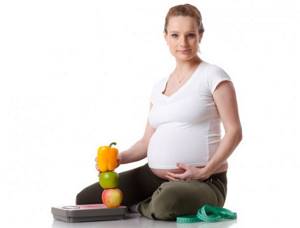
Due to excess weight during pregnancy, the expectant mother may develop a risk of various ailments and serious problems:
- Late toxicosis may develop rapidly.
- Swelling, protein in the urine.
- Increased blood pressure.
- Premature aging of the placenta.
- There may be a threat of fetal hypoxia - oxygen deficiency.
- A large fetus may be born.
- There is a risk of post-term pregnancy.
Using a diet for pregnant women to lose weight, you can get rid of excess weight and normalize metabolic processes in the body. In addition, it will help to give birth to the baby easier.
Fasting diet for pregnant women

With the help of fasting days, a pregnant woman can get rid of excess weight, which interferes not only with her, but also with the fetus. If you have gained too much excess weight, then spend fasting days a couple of times a week. In this way, it becomes possible to normalize intestinal function. During such a diet, you should listen to your condition, because a sharp change in diet during the period of bearing a child can cause various unpleasant phenomena.
Curd day
Eat low-calorie cottage cheese all day long - you can eat up to 600 grams of it per day, in 6 meals. You can replace it with kefir or yogurt, as well as other delicious fermented milk products. You are allowed to drink up to 1.5 liters of liquid fermented milk products per day.
apple day
Apples are a source of vitamins. This diet perfectly cleanses the body. During knocking, a pregnant woman can eat up to 2 kg of apples of her favorite variety - it is appropriate to prepare a salad from them, seasoning it with olive oil or lemon juice.
Kefir diet for pregnant women

The results of this diet are quite impressive. The diet should not contain alcohol, spicy, fatty or smoked foods. Kefir helps remove toxins from the body, normalize the gastrointestinal tract and get rid of accumulated toxins.
As a result of the kefir diet, the mother’s general condition improves and her mood improves. It becomes much more free to move. In late pregnancy, this way you can stabilize your weight and normalize your blood pressure.
It is enough to drink 1.5 liters of kefir per day, dividing the doses into 5 - 6 times. You can alternate kefir with fruits and vegetables - this way the body will constantly receive vitamins.
Apple diet for pregnant women
It will help increase hemoglobin. If you need to lose weight quickly, then drink 1.5 liters of water for 3 days and eat 1.5 kilograms of apples. This diet is unacceptable if the mother suffers from a stomach ulcer or high acidity.
Dukan diet for pregnant women
During pregnancy, nutrition according to the Dukan diet has its own characteristics - the need to follow the rules of rational nutrition. Nutrition should be as balanced as possible.
The diet should contain protein foods - fresh vegetables, fish and meat. You should also eat bran.
To get rid of excess weight, you should give up foods containing starch. The Dukan diet is indicated for those mothers who are prone to obesity and have gained excess weight during a previous pregnancy.
Every day you should eat a couple of slices of bread and 40 grams of cheese. Every day you need to eat 2 servings of fruit, adding dairy products to your diet. A couple of times a day you can allow yourself to eat what you really want.
Hard menu for 14 days
This is a “hellish” diet for those who want to lose weight stronger, faster, more effectively. Only such a menu will suit few people. Consultation with a doctor is required!
- Day 1. Tea without sugar (can be green), 2 glasses of water, chicken without skin, 1 glass of chamomile infusion, 300 ml of freshly squeezed vegetable juice.
- Day 2. 2 glasses of tea, water, 200 grams of grapefruit, champignons, tomatoes, kefir, yogurt, a handful of nuts.
- Day 3. Steamed lean meat, water, lemon balm tea, apple.
- Day 4. 50 grams of ham, a cup of coffee, 200 grams of vegetable stew, 1 liter of water, green tea.
- Day 5. 1 boiled egg, 150 - 180 chicken breast, 150-200 lentil soup, kefir.
- Day 6. Grapefruit (orange), egg white omelet, three glasses of water, milk, a handful of almonds.
- Day 7. A cup of coffee without sugar, milk, 200 grams of red fish or meat, vegetable salad.
IMPORTANT! Drink as much fluid as possible to prevent muscle drying out.
For those who lose weight in two weeks (which, in principle, is undesirable), a list of the second week of the diet.
- Day 8. Herbal decoction, two mugs of green tea, a slice of two hard cheeses, steamed chicken breast.
- Day 9. Cup of coffee, kefir, omelet, vegetable soup, water.
- Day 10. 200 grams of orange, a handful of nuts, 100 grams of brown rice pilaf, rosehip infusion.
- Day 11. Boiled breast (you can have beef, pork, only 100 - 150), still water, 2 cups of green tea.
- Day 12. Coffee, 100 grams of ham, a slice of hard cheese, 200 grams of lentil soup, vegetable juice, one banana.
- Day 13. 1 liter of water, 2 glasses of herbal infusion, vegetable stew, bun.
- Day 14. 2 cups of tea, yogurt (kefir), orange, a handful of almonds, 1 liter of still water.
IMPORTANT! If you feel hungry, drink more water and decoctions. The water balance should not decrease!
Despite the fact that the diet consists of giving up carbohydrates, there should not be a complete restriction, as all doctors advise. Fruits, vegetables, and grains are present on the menu, only less so.
If you want to lose weight even faster (provided your health allows), nutritionists offer fitness classes, aerobics, yoga, and sports.
No carb menu
The average woman needs to consume at least 1,200 calories per day to properly lose weight. How to create a menu for a protein diet so that you can lose weight and have a varied diet?
Diet options:
Breakfast
- Option 1:
100 gr. boiled veal; cucumber and tomato salad dressed with olive oil; green tea without sugar. - Option 2:
150-200 gr. not fatty cottage cheese; 1 green apple; black coffee without sugar. - Option 3:
2 boiled eggs; a glass of kefir.
Dinner
- Option 1:
150 gr. boiled chicken fillet: vegetable salad dressed with natural yogurt; orange - Option 2:
200 gr. grilled fish; carrot salad with olive oil. - Option 3:
100 gr. steamed veal; cabbage and red pepper salad.

Dinner
Option 1:
150 gr. baked fish; a glass of kefir.
Option 2:
3 egg white omelette; beet salad with garlic, dressed with olive oil.
Option 3:
100 gr. veal baked in the oven: salad of cucumbers and green peas.
Snack
Option 1:
Unsweetened fruit (apple, orange, grapefruit).
Option 2:
Kefir or fermented baked milk
Option 3:
Natural yogurt
Don't forget to drink at least 2 liters of water every day! Also, with such a diet, nutritionists recommend making up for the lack of carbohydrates with fats.
For example, in the morning you can drink 1 tablespoon of olive or flaxseed oil. Or take a course of vitamins with fish oil. Smooth skin and shiny hair will be pleasant bonuses.
I advise you to read my article “Low-carbohydrate diet - how it works and is it really possible to lose weight”

Reviews
Many doctors claim that any diet is harmful to the body. But despite this, the majority at least once adhered to the rules of “food self-torture”. Here's what nutritionists say about low-carbohydrate (low-carbohydrate) nutrition:
- “No matter how quickly such a diet gives effect, a reduction in the menu of these products can lead to a deterioration in health, well-being, and appearance.”
- “While you are on a diet, you should not drink beer, wine, vodka, or other alcoholic drinks.”
- “You need to get a small amount of carbohydrates! This can be done by eating citrus fruits and salad greens. But to refuse completely is to harm yourself.”
- “This diet is suitable for women after childbirth, but its duration should be up to two weeks.”
Reviews from losing weight citizens:
- “I lost 2.8 kg. in 3 days."
- “After this diet, I taught myself to drink tea without sugar and eat first meals without bread. I’m staying in great shape.”
- “This menu is not for me. I can’t stand meat (although I’m not a vegetarian), I just don’t like it.”
- “During the diet, I felt good, my head didn’t hurt, and the sensations were normal”
- “I sat like that for 3 months. With a height of 164, weight 58, I lost 5.4 kg.”
- "I liked her very much. The main thing is to believe in yourself!”
- “After giving birth I recovered. I was on a low-carb menu for a month. Helped a lot!”
- “I tried a bunch of options. Only this one was suitable, since I adore meat, fish, and milk. I lost about 3-3.5 kg. in 2 weeks."
And in the end, I would like to remind you that before changing your usual routine, think. Such changes do not benefit everyone. Remember to consult with professionals; if it is difficult to adhere to a complete dietary restriction, ask a specialist to create a unique list of products that will not cause harm.
Remember that no matter how beautiful the figure, a healthy person is the true key to success!
What products should you forget about?
When planning a carbohydrate-free diet, you need to focus on the list of foods that cannot be eaten even in the most modest quantities. It is clear that you will have to give up buns, fast food, carbonated drinks, chips, crackers, fatty foods and sweets. But there are also foods that may seem harmless in appearance, but are actually high in simple carbohydrates.
- Starchy vegetables. These are potatoes, carrots, beets, corn. So, for example, 100 g of carrots contain 7 g of carbohydrates, that is, almost half of the daily limit on a carbohydrate-free diet.
- Semi-finished products and canned food. In industrial freezing and preservation, additives with a high carbohydrate content are used.
- Sausages. Also undesirable on a low-carbohydrate diet due to the nature of in-line production. Formally, there should be no carbohydrates in such products, but in fact their presence is quite likely.
- Floury. All dishes that use flour should be excluded. This includes bread, pasta, dumplings, pancakes, and even the appropriate gravy.
- Cereals and legumes. All cereals, even whole grains, are excluded. For example, 100 g of buckwheat contains 68 g of carbohydrates, and semolina contains 73.3 g. Beans, lentils, peas, soybeans and chickpeas are also not consumed.
- Sweets. Including honey, yogurt and cottage cheese with fruit additives. For example, cheesecakes contain 27.5 g of carbohydrates, and honey - 80.3 g.
With a low-carbohydrate diet, almost all fruits, fresh fruit juices and dried fruits are also prohibited. The exception is lemon. Alcohol is also dangerous. Yes, not all alcohol contains carbohydrates. But all high-grade drinks stimulate appetite. In addition, drinking will become additional stress for the body during a difficult period of losing weight. The kidneys and liver are already working in emergency mode, processing unusually large amounts of protein.

